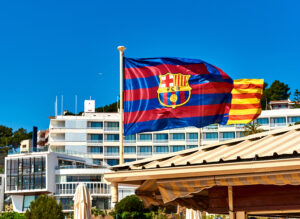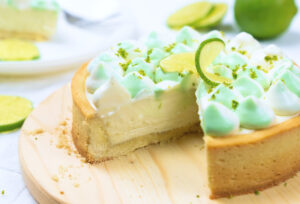In the last few years we seem to have seen an increase in the amount of Moroccan products available in supermarkets. This growth could have something to do with Morocco’s sudden surge in tourism. Besides, one of the things people tend to rave about when they come home is the food.
The food in Morocco is delicious with its combination of rare spices and unique flavours. But don’t worry if you’re not a fan of spiced food because most Moroccan dishes won’t burn your mouth.
Take a look at some of our favourite dishes –
Starters/Sides
Harira – This is a soup mostly eaten in the winter, often at breakfast. In fact, you can buy instant versions in some supermarkets, but if you prefer home-cooked food it’s also easy to make. Made up of tomatoes, chick peas and lentils this dish is also full of goodness.
Tomato, cucumber and coriander salad – If you’re having a family meal in Morocco you’ll often find this salad being dished out on miniature saucers as a side dish. This salad is very refreshing, especially in the heat. Finely chopped tomatoes, cucumber, coriander and sometimes red onion all make this recipe a delicious serving.
Fried aubergine – slices of aubergine are dipped in a mix of eggs, cumin, salt and pepper then fried in oil.
Mains
Tagine – Is any type of meat or fish slow-cooked with a selection of vegetables in a delicious gravy-like sauce. The ingredient is then seasoned with different spices. The main spices used in Moroccan cooking are cumin, coriander and turmeric. This dish is also eaten with freshly made bread which is used to dip in the sauce and the meat.
Couscous – This is our favourite and is traditionally eaten on a Friday, similar to our Sunday dinner. The meat is cooked in a sauce and the vegetables are later added. You’re supposed to include seven different vegetables in a couscous, so to help you out our preferences are courgette, butternut squash, carrot, onion, sultanas, cauliflower, broccoli, aubergine and in the UK parsnips. Us Brits also tend to add mushrooms instead of sultanas. Finally, the couscous is soaked in the juices from the vegetables and meat as this prevents dryness and adds plenty of flavour.
Meatballs – Otherwise known as kofta, a widely used term in Morocco, refers to dishes made with mince.This is mince molded into balls and spiced with cumin, coriander and turmeric. The meat is later fried in olive oil and a tomato sauce is often added. Pair this with bread or add spaghetti and you’ll have a mouth-watering main. When boiling spaghetti the Moroccans tend to add turmeric. This yellow coloured spice is what gives the spaghetti its unique flavour.
Desserts/Sweets
Although Morocco has the most delicious food, this doesn’t necessarily apply to their desserts. But that’s just our opinion. However, there are a couple which deserve a mention.
Doughnuts –Smells of freshly baked bread followed by an additional treat at the breakfast table are common in Morocco. If you love fresh doughnuts, you’ll love Morocco. That’s because there’s something much more appealing about home-made doughnuts, right? Plus, you can enjoy these treats at any hour of the day. Try eating them with fruit juices or coffee for a tasty mid-morning snack.
Dates – A staple food here, often used at Ramadan, it’s safe to say that dates are a very important part of Morocco’s culture. A popular way to serve them is with almonds, which have been soaked in honey.
Fresh fruit salad – The fruit in Morocco is amazing and extremely cheap. Fresh figs, pomegranates and oranges all grow here, so fruit is quite often used in Moroccan dishes. Plus, juices are made with freshly squeezed oranges, sugar and sometimes a hint of rosewater. Top this off with some fresh mint and you’ll have the freshest salad in the kitchen.
Moroccans generally eat in groups, unlike most of us in the UK. There is usually a large plate placed on a table which everyone sits round and tucks in. Forget knives and forks because all you need in this country is your hands and a piece of bread. But there’s one exception and that’s the spoon. The spoon is the only piece of cutlery used here.
There’s even a couscous eating knack, something most of us definitely haven’t mastered! The technique involves picking up the couscous with one hand and shaking it until it rolls into a ball. Think we’ll stick with the spoon for this one.
Most households will offer what they call high tea. This usually consists of Moroccan tea, which is flavoured with fresh mint, and eaten with cakes. Alternatively, you may be offered bread with jams, butter or cheese.
Has this blog tantalised your taste buds? Are you already planning a food-filled trip to Morocco? If so, we hope these dishes have inspired you. Or, if you’re feeling adventurous you could always try recreating them at home.






